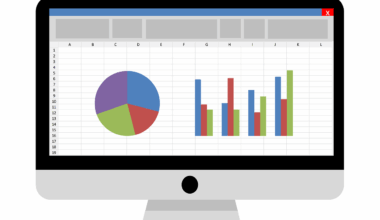Performance Calibration Best Practices for Financial Services
Performance calibration is critical within financial services as it enhances alignment across an organization’s performance management approach. Within a regulated industry, maintaining consistency in performance evaluations ensures fairness and compliance. One effective strategy is to leverage objective data. Financial services firms often have rich data on employee performance; utilizing this data ensures that the calibration process mitigates biases. Calibration sessions should consist of diverse groups including representatives from different departments to ensure varied perspectives are included. This diversity enhances the quality and accuracy of the evaluation process. Regular calibration meetings can promote transparency across teams. It’s beneficial to develop clear performance metrics, ensuring everyone understands how performance will be measured. Performance standards should reflect the competencies needed for various roles within the organization. Additionally, involving employees in the process can improve engagement. Employees can provide insights that may not be visible from a higher management perspective, leading to a more holistic view. Leveraging technology can also streamline the calibration process, providing necessary tools for performance tracking. Careful documentation during calibration ensures that there’s a clear record for future evaluations and learning.
Establishing a Calibration Framework
To implement effective performance calibration practices, the establishment of a structured framework is essential. This framework should include defined performance categories relevant to financial services such as customer service, compliance, and operational efficiency. Each category must be accompanied by specific performance indicators corresponding to desired outcomes. A training program for managers is also vital; equipping them with the tools to conduct effective discussions during calibration sessions can ensure more consistent evaluations. Conducting pre-calibration meetings can set the tone for how evaluations will be conducted, aligning expectations across leaders. To promote consistency in reviews, using a standard rating scale across all departments helps unify the calibration process. Managers should be encouraged to provide context to ratings, moving beyond just numbers to include behavioral examples. Coaching managers on how to deliver constructive feedback helps in supporting employee growth and performance improvement. Regularly reviewing and refining the calibration framework ensures that it aligns with evolving company goals and regulatory requirements. Furthermore, involving HR in developing this framework brings essential expertise to ensure compliance with labor laws and standards. Continuous improvement mechanisms within this framework help maintain relevance in a changing business landscape.
Communication plays a vital role in successful performance calibration. Effectively communicating the purpose and importance of calibration sessions to all employees ensures buy-in across the organization. Employees must understand how calibration directly impacts their development and visibility within the company. Regular updates and transparent feedback loops regarding calibration outcomes are essential in building credibility in the calibration process. It’s beneficial to adopt a continuous feedback culture. This allows employees to view performance as an ongoing dialogue rather than a one-off yearly event. Leaders should encourage openness, where employees feel comfortable discussing challenges without fear of retribution. Documenting insights from these communication channels can identify trends in performance issues or highlights, which can inform future calibration processes. Engagement surveys to gauge employee perspectives on the calibration process can yield valuable insights on how to improve it. Furthermore, recognizing and rewarding contributions that positively impact team performance strengthens the overall calibration process. Creation of an inclusive environment leads to a more robust calibration outcome. Lastly, the use of technology can facilitate communication and feedback by integrating performance management solutions that allow real-time input and assessment.
Data-Driven Insights for Calibration
Incorporating data-driven insights into performance calibration enhances objectivity and accuracy. Utilizing performance management software that compiles quantitative and qualitative data provides managers with comprehensive insights. Predictive analytics can be employed to recognize trends in employee performance over time, aiding managers in making informed decisions during calibration sessions. Data should not only come from formal reviews but also from ongoing feedback and peer assessments. Combining this data with core business outcomes helps establish direct connections between performance and business impact. It’s also essential to ensure data privacy and compliance, especially handling sensitive information within financial services. Regular audits of the data collection process can safeguard against biases influenced by incomplete or inaccurate data. Adequate training on interpreting data is necessary for managers to effectively utilize insights gathered through the calibration process. Encouraging managers to share data-driven findings with their teams promotes transparency and trust. As new data technologies emerge, staying updated with the latest tools can ensure your calibration processes remain relevant and effective. Ultimately, integrating a data-centric approach leads to informed decisions and strategic alignment in performance management.
Feedback mechanisms are at the heart of effective performance calibration. It is essential to create a feedback-rich environment, where inputs are collected continuously rather than solely during formal review periods. Managers should be trained to provide timely and actionable feedback to ensure employees recognize areas of improvement. Self-assessments can also be integrated into this feedback loop, allowing employees to participate actively in discussions about their performance. 360-degree feedback, which includes insights from peers, subordinates, and supervisors, can provide a well-rounded perspective of performance. Regularly scheduled check-ins ensure that employees receive a balance of positive reinforcement and constructive criticism throughout the year. Feedback should be specific, focusing on behavior rather than personality, and linked to measurable outcomes. Encouraging a two-way feedback culture ensures that employees feel valued and invested in their development. Utilizing technology platforms can enhance these feedback mechanisms by creating accessible channels for continuous dialogue. Regular analysis of feedback trends can help organizations adapt their calibration processes to community needs and sentiments. Ultimately, robust feedback mechanisms strengthen connection and performance alignment across the organization.
Aligning Performance Calibration with Business Goals
Aligning performance calibration with broader business goals is crucial in driving organizational success. Ensuring that performance management systems reflect the strategic objectives of the financial institution fosters a culture of accountability and performance excellence. To achieve this alignment, management should clearly communicate how individual roles contribute to overarching goals. Establishing key performance indicators (KPIs) tied to strategic objectives is foundational in this alignment process. Regularly reassessing these KPIs ensures they evolve alongside shifting business objectives and market conditions. It can be beneficial to include cross-functional perspectives in calibration discussions; this elucidates how other departments view the impacts of individual performance. Strategic alignment not only enhances employee motivation but also boosts overall performance efficiency. Technology integration can be a valuable resource in tracking progress towards these goals, as many performance management tools have reporting features that align directly with corporate objectives. Ensuring that reviews and calibrations are forward-looking and growth-oriented encourages employees to commit to their professional development. Lastly, recognizing employees who exemplify alignment with organizational goals fosters a culture of achievement and continuous improvement.
In conclusion, effective performance calibration in financial services requires a holistic approach combining structured frameworks, communication, data-driven insights, and a clear alignment with business objectives. Maintaining a culture conducive to performance calibration involves meticulous planning and regular updates to processes in response to evolving needs. Involving employees in the calibration journey builds engagement, leading to better outcomes. The calibration process should be viewed as an opportunity for growth rather than merely a compliance necessity. While implementing technology is beneficial, human elements such as empathy and understanding must not be overlooked; they play a crucial role in fostering a supportive environment. By combining objective metrics with subjective feedback, organizations can create a balanced evaluation system. Continuous training for managers ensures effective administration of performance discussions. Ultimately, an organization focused on robust performance calibration can drive excellence, engage employees, and achieve its strategic goals. Cultivating an inclusive, data-informed, and transparent calibration process reflects its core values and elevates the entire workforce. As financial services continue to evolve, the ability to adapt calibration practices will be paramount in sustaining an engaged and high-performing team.


